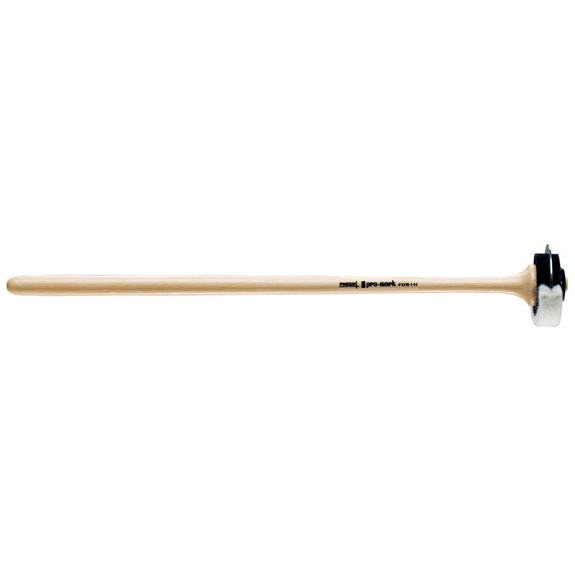Enigma Variations - Comments by DAT
First of all, many thanks to Andrew for his article.
I'd like to offer a few comments along with some additional alternatives for the two problem variations.
With regard to Troyte (Variation VII), I prefer to place the notes on the larger drums, that is the G on the 31", the C on the 29", and the high g on the 26". This requires cranking the head up an extra half step from the normal top f# to the high g. On some models of instruments or with calfskin heads this is impractical or even risky. However, with most Dresden-type instruments this can be done easily with the master screw, although with some bowl configurations the head will simply be too tight. The first time you do this it is advisable to raise the tension slowly, as the head will probably not have been stretched that tightly before. The master screw change needs to made starting in Variation XI, or after the d 2 bars after reh 17, the last time that drum is used. It is easier to raise the d to an eb, then pedal up to see if the g is high enough, rather than turn the master screw while the pedal is all the way up. I feel the tight heads give a much more intense sound for this variation, where you don't want any trace of a wooly sound.
Another issue is the interpretation of the dynamics for the opening solo, some prefer a "step-up" approach more or less like this (I do not myself):

A few more points, standard tempo for this movement these days is closer to 84 to the bar rather than the printed 76. Since this excerpt appears fairly often on timpani audition lists it is useful to practice it with a wide range of tempos. Also, practicing the passage this way, then switching to the "ink" will help "even out" the passage:

As far as Variation XIII, here are some commonly used methods:
1. Have one of the percussionists help and play the roll with snare sticks.
2. Have one of the percussionists help and play the roll with coins.
Andrew's method also works well, as indicated by the recorded performance he sent me, the sound is quite good on calf heads. I use yet another option (this method is courtesy of Cloyd Duff):
For the first passage from reh 57 to 59, I mute the 29" drum with a standard suede mute in the center, and play the roll with the back ends of a Duff #6 stick. I play a double stroke roll with the sticks about 1" from the rim, with the sticks about an inch apart. This is easy to do with either traditional or matched snare drum grip. I also place a nickel (US $0.05) on the head opposite the playing spot about 4-5" in, as shown below:

An assistant is needed to lift up and remove the mute and coin as you switch the ends of the sticks for the naturale passage. In past performances in our orchestra I have had one of the string bass players help, since the absence of one member won't be noticed for the few bars it will take for s/he to return to the bass section during the last variation. In our new hall my regular assistant timpanist does it.
For the passage at the end of the movement from reh 60 I use the same method. My assistant places the mute and coin as before on the 31" drum for the G, and this time I use the back ends of a Duff #2 stick.
With this method you can play a very fine roll, which works quite well with plastic heads. The same method (without the coin or the need for an assistant) can be used in other similar places in the literature such as the "Neptune" movement in Holst's The Planets.
Another option uses the Tom Freer Enigma specialty timpani sticks. These have washers on one half of the stick that simulate the coin effect, and a regular soft mallet on the other half. You simply turn the sticks over to make the switch and no assistant is needed. More information is available here.

Further comments from Norman Del Mar (from Orchestral Variations)
and James Blades (from Percussion Instruments and Their History)

Back to the Timpani FAQ Page





